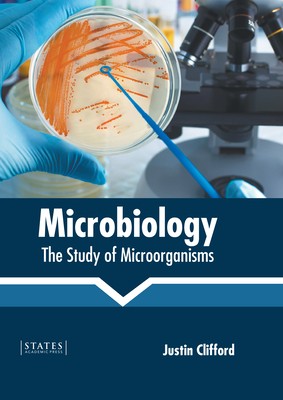
- We will send in 10–14 business days.
- Publisher: States Academic Press
- ISBN-10: 1639893547
- ISBN-13: 9781639893546
- Format: 17.8 x 25.4 x 1.6 cm, hardcover
- Language: English
- SAVE -10% with code: EXTRA
Microbiology: The Study of Microorganisms (e-book) (used book) | bookbook.eu
Reviews
Description
The study of acellular, unicellular and multicellular microorganisms is known as microbiology. These microorganisms can be eukaryotic and prokaryotic. The various sub-fields of this discipline are mycology, virology, bacteriology, protozoology, phycology and parasitology. The integration of these fields leads to the formation of the field of microbiology. Microscopy, staining, identification based on DNA sequencing like the rDNA gene sequence are some of the techniques used in this field for the identification of microorganisms. This field of study is used for the treatment of cancer, digestion problems in humans, biodegrading industrial and agricultural wastes and for the production of multiple biopolymers such as polyesters and polyamides. This book elucidates the concepts and innovative models around prospective developments with respect to this field. It picks up individual branches and explains their need and contribution towards the development of microbiology. Coherent flow of topics, student friendly language and extensive use of examples make this an invaluable source of knowledge.
EXTRA 10 % discount with code: EXTRA
The promotion ends in 19d.00:41:35
The discount code is valid when purchasing from 10 €. Discounts do not stack.
- Publisher: States Academic Press
- ISBN-10: 1639893547
- ISBN-13: 9781639893546
- Format: 17.8 x 25.4 x 1.6 cm, hardcover
- Language: English English
The study of acellular, unicellular and multicellular microorganisms is known as microbiology. These microorganisms can be eukaryotic and prokaryotic. The various sub-fields of this discipline are mycology, virology, bacteriology, protozoology, phycology and parasitology. The integration of these fields leads to the formation of the field of microbiology. Microscopy, staining, identification based on DNA sequencing like the rDNA gene sequence are some of the techniques used in this field for the identification of microorganisms. This field of study is used for the treatment of cancer, digestion problems in humans, biodegrading industrial and agricultural wastes and for the production of multiple biopolymers such as polyesters and polyamides. This book elucidates the concepts and innovative models around prospective developments with respect to this field. It picks up individual branches and explains their need and contribution towards the development of microbiology. Coherent flow of topics, student friendly language and extensive use of examples make this an invaluable source of knowledge.


Reviews